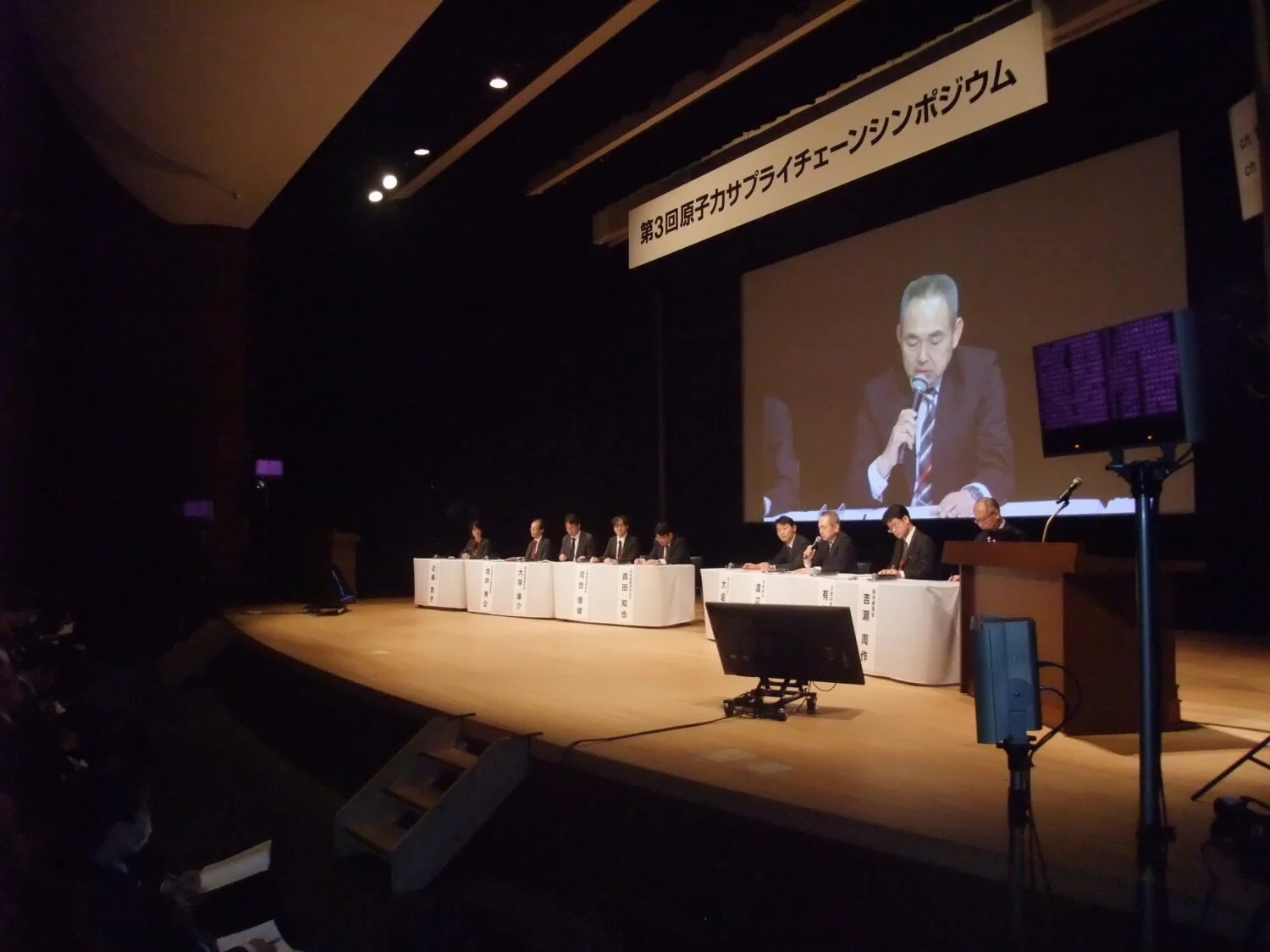At the meeting, it was generally agreed to use the Moonshot Research and Development Program, under which the government sets ambitious and inspiring goals regarding important societal issues―such as global warming and the challenges of an aging society―and supports R&D based on bold ideas. So far, nine goals have been set for 2040 and 2050. About JPY3 billion has been earmarked in the FY2023 budget.
Kicking off the working group, member TAKENAGA Hidenobu, director general of the Rokkasho Fusion Institute of Japan’s National Institute for Quantum and Radiological Science and Technology (QST), described the principle and characteristics of nuclear fusion energy and the course of actions aimed at making it a practical reality.
He explained the cooperation between industry and academia that supported Japan’s original prototype reactor design, expected to demonstrate the generation of approximately 640MW, following on from the International Thermonuclear Experimental Reactor (ITER) Project.
Regarding the so-called technology gap between current and future commercial reactors, he noted three key points: downsizing, higher availability factors, and simplification leading to improved economic efficiency.
To bridge that gap, Takenaga cited R&D by research institutions, universities and others being conducted individually—not yet entirely systematically—but still a source of promising ideas. He asserted the need to solicit ideas in the future from a broader range of academic and industrial participants, and to establish a program director who would anchor the effort overall.
Another working group member, TAKEDA Shutaro, associate professor at the Urban Institute of Kyushu University and co-founder of Kyoto Fusioneering Ltd., a nuclear fusion venture, described changes in the environment for startups over the past 20 years, particularly those seeking to realize the promise of nuclear fusion.
He said, “There were only a few companies in the 2000s, but 35 now.” In 2021 alone, those companies attracted approximately JPY500 billion in investments, with overall private investment now standing at more than JPY750 billion. Those, Takeda said, were remarkable results.
In the United States in 2021, total private investment exceeded federally budgeted amounts for the first time, and by a factor of five. Globally, Takeda said, “Two out of three of those companies will be delivering electricity by 2035.” He called the realization of fusion in such a brief time “a point worth special mention.”
He then said that the “axis of fusion innovation” for a nuclear startup comprises three things, as follows:
- An innovative confinement method (aside from tokamak, helical or lasers)
- Innovative element technology
- Innovative social implementation.
Regarding innovative element technology, Takeda talked about activities in Europe and the United States, where efforts to downsize and reduce costs include use of advanced materials and AI. On innovative social implementation, he cited applications other than power generation, including space transport, nuclear medicine, hydrogen production and heat supply, and said that societal and industrial structures should be shifted via “backcasting” based on the needs and markets of the future―that is, envisioning a desirable future and working backward to create policies and programs to reach it.
In the Moonshot Research and Development Program, which shapes a course of actions for nuclear fusion R&D, nine goals are currently set to encourage challenging research toward resolving various societal, environmental, and economic issues.
Working group member YOSHIDA Zensho, director general of the National Institute for Fusion Science, said, “Obtaining input from a wide range of scientific and technological fields will certainly bring innovation,” emphasizing the importance of interdisciplinary cooperation.




-1.png)







